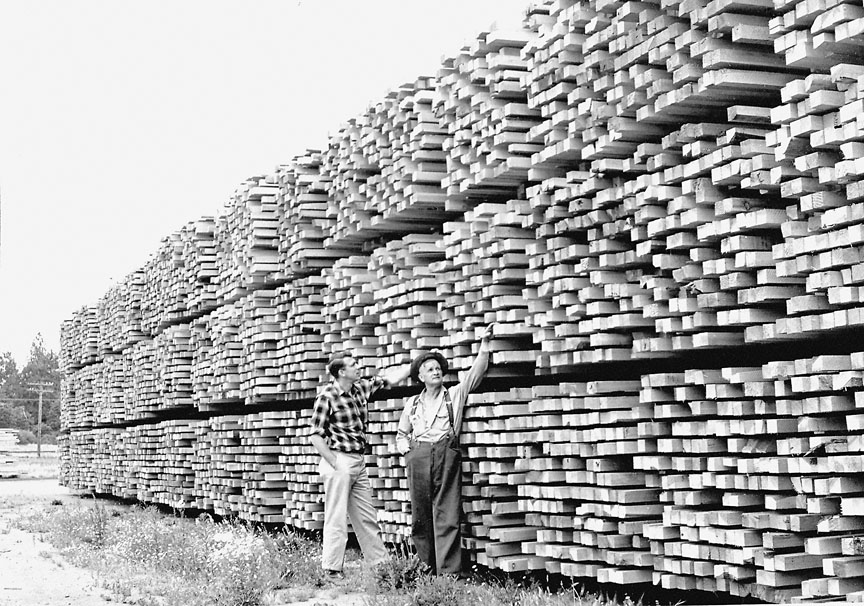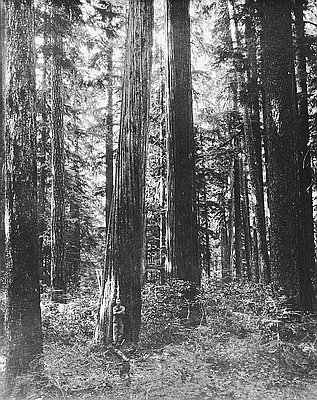- Catalog No. —
- OrHi 104586
- Date —
- March 11, 1960
- Era —
- 1950-1980 (New Economy, Civil Rights, and Environmentalism)
- Themes —
- Environment and Natural Resources, Trade, Business, Industry, and the Economy
- Credits —
- Oregon Historical Society
- Regions —
- Southwest
- Author —
- American Forest Products Industries, Inc.
Pencils, Millions of Them
Oregon is home to the most popular species of tree used in the manufacture of pencils, incense-cedar (Calocedrus decurrens). Pencils made from this fine-grained wood are reddish brown inside and have a visible seam. Smell a freshly sharpened pencil made from this false cedar and you will immediately know how it got its name.
Incense-cedar ranges from the southern slope of Mt. Hood to Baja California. In Oregon, it is most abundant in the southwestern part of the state. This sturdy, long-lived tree tends to grow in mixed stands of other conifers, often on dry western slopes.
In the 1910s, declining supplies of eastern redcedar in the American South led pencil manufacturers to look elsewhere for wood. The straight-grained incense-cedar, abundant in the Oregon Cascades and California’s Sierra Nevada, made an ideal replacement. In addition to pencils, the durable, decay-resistant wood of the incense-cedar is used in house siding, decking, interior paneling, and in the construction of cedar chests. The plant is also cultivated as an ornamental tree.
This photo, taken in March 1960, shows two workers at the Gulf Red Cedar Company mill in Central Point, Oregon. They are examining a stack of incense-cedar blocks that will soon be manufactured into pencils, millions of them. In addition to its Oregon mills, the Gulf Red Cedar Company had mills in Tennessee, Alabama, and California. The back of the photo reads: “The company figures it mills about one third of the world’s supply of pencil stock. Some 60% of the logs for the Central Point mill come from forest industry tree farms where timber is grown as a renewable product.”
Today, many pencils are manufactured from plastic or tropical rainforest trees, but Oregon and California continue to supply the world with pencils made from the aromatic wood of incense-cedar.
Further Reading:
Jensen, Edward C., and Charles R. Ross. Trees to Know in Oregon. Extension Circular 1450. Corvallis, Oreg., 1994.
Burns, Russell M., and Barbara H. Honkala. Silvics of North America. 2 vols. Agriculture Handbook 654. Washington, D.C., 1990.
Written by Robert Donnelly, © Oregon Historical Society, 2003.

